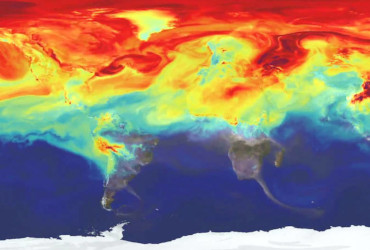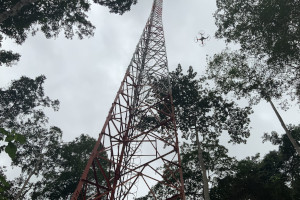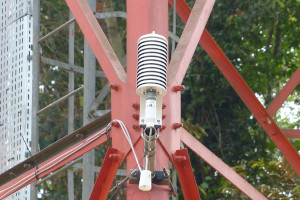Tracking Carbon Exchange in Ghana’s Tropical Forests
Service Overview
EORIC offers Carbon Flux Monitoring Services through a state-of-the-art Eddy Covariance Tower installed in the Bia Tano Forest Reserve (Mim, Ahafo Region). This service focuses on generating high-quality data to monitor, understand, and quantify the exchange of carbon dioxide (CO₂) between tropical forest ecosystems and the atmosphere—helping shape regional and global climate models and policies. Through this service, EORIC provides continuous environmental data collection, advanced data processing, research collaboration, and capacity-building opportunities related to carbon balance, greenhouse gas emissions, and ecosystem-climate interactions.
Objectives of the Service
– Monitor and model CO₂ exchange in a tropical forest ecosystem
– Assess the carbon sequestration capacity of Ghanaian forests
– Generate data to support climate change policies and carbon trading initiatives
– Facilitate research, education, and stakeholder engagement through reliable scientific data
Project Partnership
This service is operated in collaboration with the Global Change Research Institute, the Czech Academy of Sciences, and Mendel University, the Czech Republic. We conduct joint research, data analysis, and student training based on a shared scientific agenda and mutual capacity-building.
System and Technology Highlights
The Carbon Flux Monitoring Station uses internationally recognised standards and advanced instrumentation, including:
53-Metre Eddy Covariance Tower with:
– 3D Ultrasonic Anemometer (Gill HS-50)
– CO₂/H₂O Analyzer (LI-7200, LI-COR)
– SmartFlux and EddyPro software for real-time and post-processed flux computations
– CO₂ Concentration Profiling with LI-840A Infrared Gas Analyzers
– Vertical meteorological profiling (air temperature, humidity at 10 levels)
– Radiation sensors: PAR, global radiation (EMS12), and net radiometer (CNR1)
– Rainfall gauge: Automatic 386C (Met One)
– Soil and groundwater sensors for water balance studies
Data Collection & Application
– Data is collected year-round and transmitted via solar-powered wireless internet to our Sunyani facility
– Data is shared through:
– Workshops and conferences
– Collaborative research
– Ministry briefings and stakeholder meetings
– Results are integrated into national and global platforms such as FLUXNET and support Ghana’s reporting to the Intergovernmental Panel on Climate Change (IPCC)
Service Components
1. Long-Term Environmental Data Monitoring
Continuous CO₂, water, and energy exchange measurements over forest ecosystems.
2. Technical Infrastructure Maintenance
Includes power supply support from NEDCo/VRA and site management.
3. Data Transmission and Access
Remote access and cloud transmission via solar-powered, cellular internet units.
4. Research Collaboration and Experience Sharing
Support for joint studies, publications, and inter-site comparisons using global flux databases.
5. Capacity Building & Awareness Creation
Training for staff, students, and policymakers. Awareness sessions and technology demos for governmental agencies.
Who We Serve:
– Climate and forest researchers
– Environmental NGOs
– Government agencies (e.g., EPA, Ministry of Environment)
– International scientific collaborators
– Students and early-career scientists
Want to Partner or Use the Data?
EORIC welcomes new partnerships and provides tailored services for:
– Carbon offset and REDD+ program support
– Scientific collaboration and joint PhD supervision
– Customized data analytics and environmental consulting
Contact us at eoric@uenr.edu.gh to learn more or schedule a stakeholder briefing.




